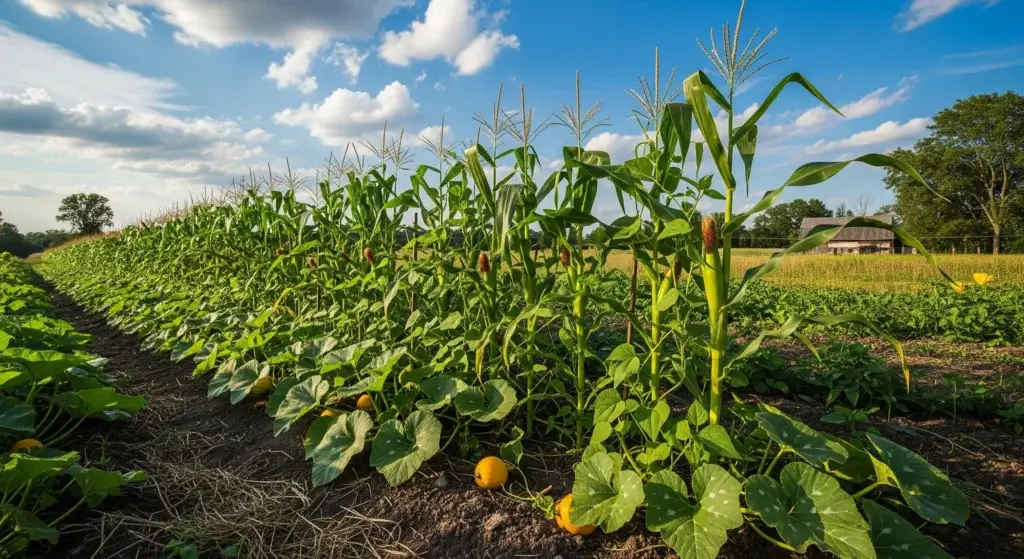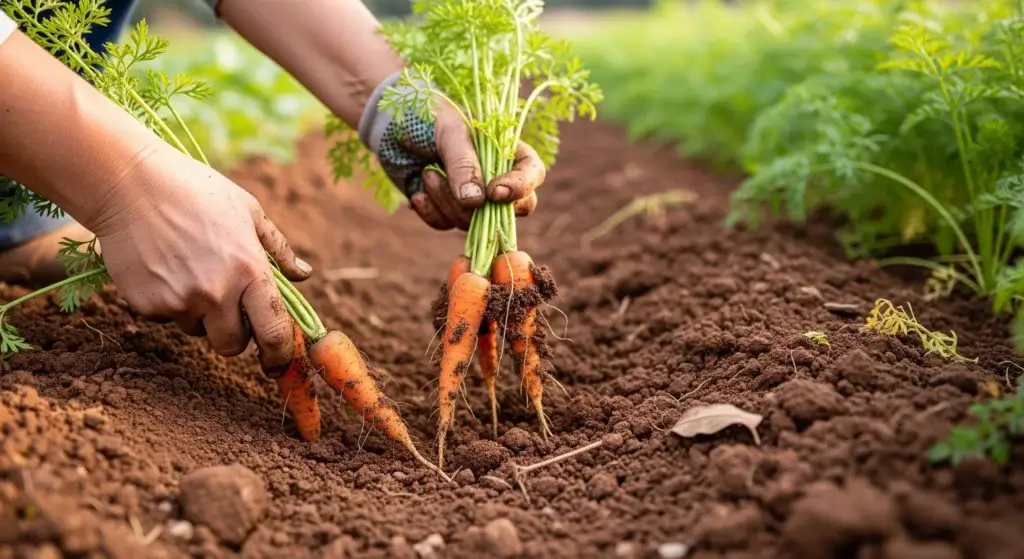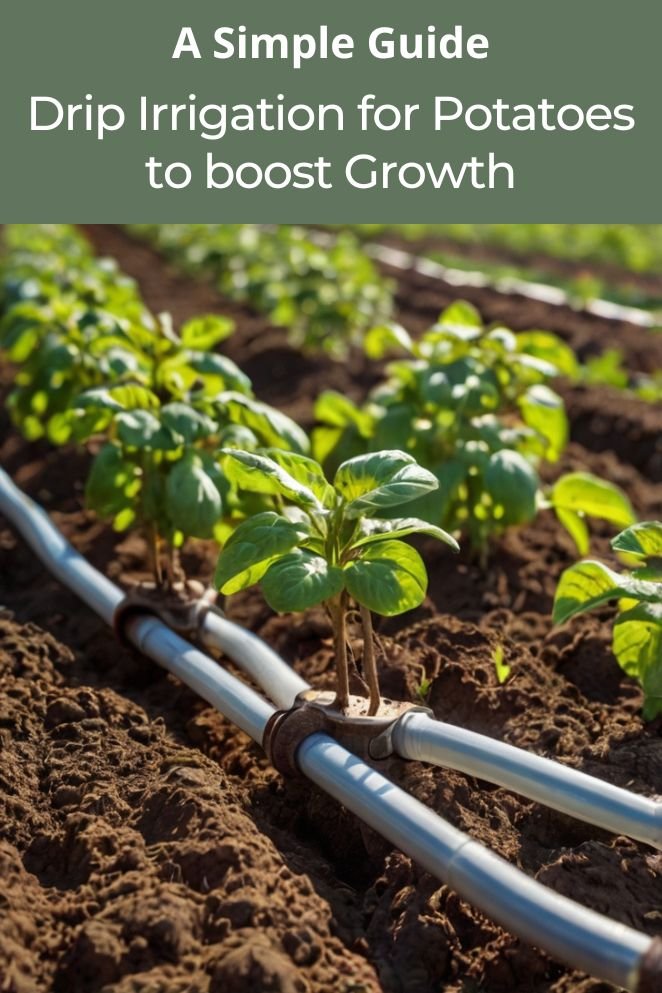
Growing potatoes is an endeavor that requires careful attention to detail, particularly when it comes to irrigation.
Water management plays a crucial role in the health and productivity of potato crops.
One of the most effective methods for watering potatoes is drip irrigation, a system that delivers water directly to the roots of plants, reducing waste and promoting healthier growth.
In this blog post, we’ll dive into the benefits of drip irrigation for potatoes, discuss the components of a drip irrigation system, guide you through the installation process, and provide tips for proper use to help you maximize your yield.
Benefits of Drip Irrigation for Potatoes
Drip irrigation offers numerous advantages for potato growers, making it a preferred choice for many farmers and gardeners.
Here are some key benefits:
Water efficiency
Drip irrigation is incredibly efficient because it delivers water directly to the plant’s root zone.
This targeted approach reduces water waste due to evaporation or runoff, making it more sustainable and cost-effective.
According to a study published in the Journal of Agricultural Water Management, drip irrigation can save up to 30-50% of water compared to traditional irrigation methods.
Improved crop yield and quality
By providing consistent moisture levels, drip irrigation helps prevent water stress in potato plants, leading to better tuber development and higher yields.
Research has shown that potatoes grown with drip irrigation can produce up to 20% more yield than those using conventional irrigation systems.
Reduced disease risk
Overhead irrigation can leave potato foliage wet, creating a favorable environment for fungal diseases such as late blight.
Drip irrigation minimizes foliage wetness, thereby reducing the risk of disease and the need for chemical fungicides.
Soil health
Drip irrigation reduces soil erosion and compaction, which are common issues with flood or sprinkler irrigation.
By maintaining soil structure and minimizing surface runoff, this method promotes better root growth and nutrient uptake.
Nutrient management
Drip systems can be easily combined with fertigation, the process of delivering fertilizers through the irrigation system.
This allows for precise application of nutrients, enhancing plant growth and reducing fertilizer waste.
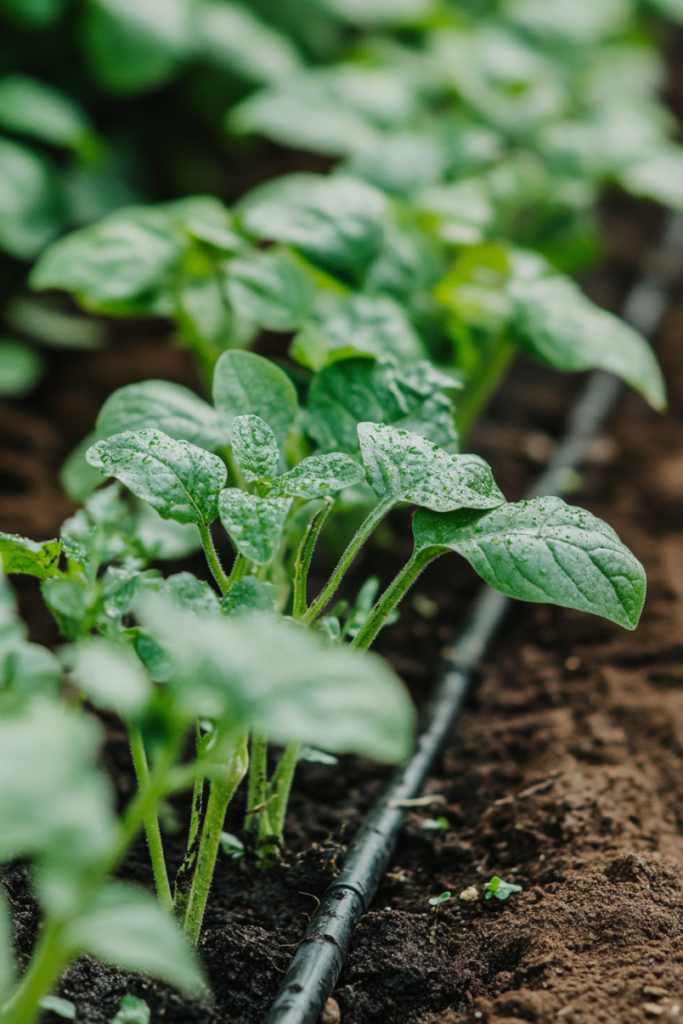
Components of a Drip Irrigation System
Understanding the components of a drip irrigation system is essential for setting up an effective watering system for your potato crop.
Here are the key parts you’ll need:
- Water source: This can be a well, pond, or municipal water supply. The water source should provide sufficient pressure and flow for the system.
- Pump: If your water source doesn’t have enough pressure, a pump will be necessary to ensure water is delivered effectively through the drip lines.
- Filter: A filter is crucial to prevent debris and sediment from clogging the emitters. Filters can be sand, disc, or screen types, depending on the water quality.
- Pressure regulator: Drip systems operate at low pressure, typically between 10-30 psi. A pressure regulator helps maintain consistent pressure.
- Mainline and submainline pipes: They are usually made of polyethylene or PVC and vary in diameter based on the system’s size and water requirements.
- Drip lines: These are the tubes that run along the rows of potato plants, delivering water directly to the root zone.
- Emitters: Emitters are small devices attached to the drip lines that release water at a controlled rate.
Types of Emitters
Emitters are a critical component of drip irrigation systems because they control the flow and distribution of water.
Here are the common types of emitters used in drip irrigation for potatoes:
Pressure-compensating (PC) emitters
These emitters deliver a consistent flow rate regardless of changes in water pressure.
They are ideal for uneven terrain or long drip lines where maintaining uniform water distribution is challenging.
Non-pressure-compensating emitters
These emitters deliver water at varying rates depending on the pressure.
They are suitable for flat fields and shorter drip lines where pressure variations are minimal.
Adjustable emitters
These emitters allow you to adjust the flow rate manually, providing flexibility for different plant water requirements.
They are useful in gardens where plants with varying water needs are grown together.
Inline emitters
These emitters are built into the drip line tubing and are spaced at regular intervals.
They are commonly used for row crops like potatoes, providing uniform water distribution along the rows.
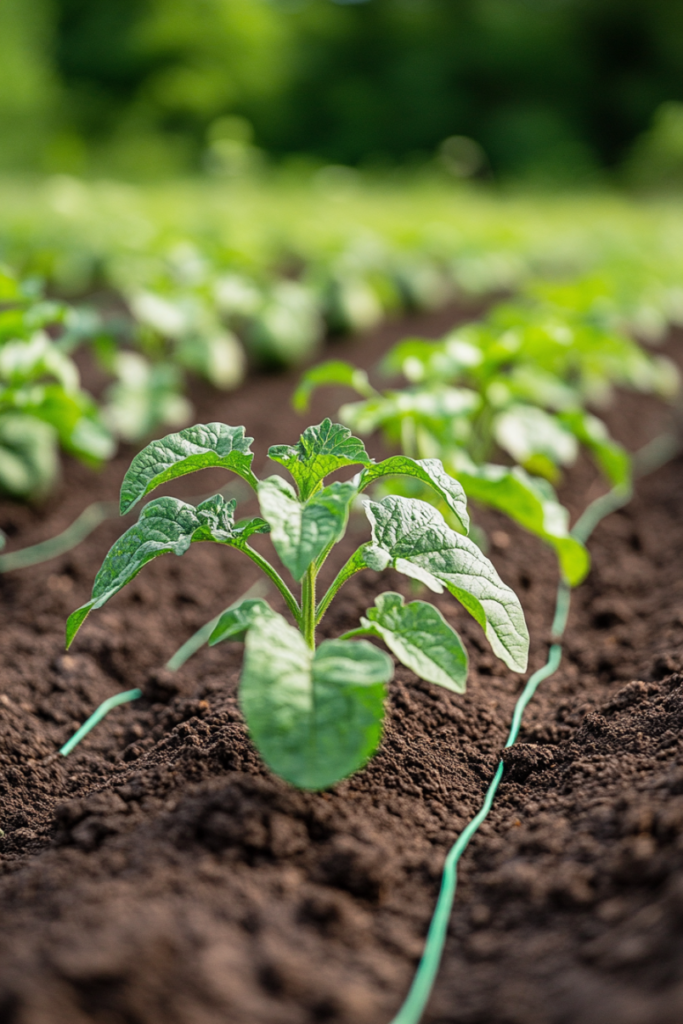
Installation of Drip Irrigation for Potatoes
Installing a drip irrigation system for potatoes requires careful planning and attention to detail.
Here’s a step-by-step guide to help you get started:
Plan your layout
Start by drawing a layout of your potato field or garden.
Decide how far apart each row of potatoes will be and the length of each row.
This helps you figure out how much drip line you’ll need and how many emitters should be used.
Install the mainline and submainline pipes
- Position the pipes: Lay out the mainline and submainline pipes around the edge of your field. These pipes will carry water from your source to the drip lines.
- Connect to water source: Attach these pipes to your water source, pump, and filter system. This setup ensures that the water is clean and can flow properly through your irrigation system.
Lay the drip lines
- Place the drip lines: Run the drip lines along each row where you’ll plant your potatoes. Secure the lines in place with stakes or clips to keep them from moving.
- Position the emitters: Make sure that the emitters on the drip lines are placed close to the base of each potato plant.
Connect the emitters
Connect the emitters to the drip lines based on your planned spacing.
Make sure each emitter is securely fastened and check that it’s functioning correctly to avoid any water distribution issues.
Test the system
Before you start planting, turn on the irrigation system to test it.
Look for leaks, clogs, or uneven water distribution.
Make any necessary adjustments to fix these issues and ensure the system operates efficiently.
Bury the drip lines (Optional)
Burying the drip lines a few inches below the soil surface can protect them from damage and help reduce water loss due to evaporation.
This step is optional and depends on your specific conditions and preferences.

Proper Use of Drip Irrigation for Potatoes
Once your drip irrigation system is installed, proper use and maintenance are key to maximizing its effectiveness.
Here are some tips to ensure your system operates efficiently:
Monitor soil moisture
Regularly check the moisture of the soil around your potato plants.
You can use a soil moisture meter or simply feel the soil with your hand.
Potatoes need enough water, but not too much.
Overwatering can cause root rot, while underwatering can stress the plants and lower your yield.
Adjust watering schedules
Change your watering schedule based on the growth stage of your potatoes and current weather conditions.
For instance, potatoes need more water when the tubers are developing, so increase watering during this period.
During the early growth stages, you can water less frequently.
Check for leaks and clogs
Look over your drip lines and emitters often to spot any leaks, clogs, or damage. Fix or replace any faulty parts as soon as you find them. This helps ensure that water is distributed evenly and that all your plants receive the right amount of moisture.
Maintain the system
Periodically clean the filters and flush the drip lines to remove any debris or sediment that might cause clogs.
This is particularly important if you’re using water that has a lot of minerals or sediment, as these can quickly lead to blockages and reduced system efficiency.
Use mulch
Spread mulch around your potato plants to help keep the soil moist.
Mulch helps reduce evaporation, keeping the soil cooler and more consistent in moisture.
It also helps prevent weed growth, which can compete with your potatoes for water and nutrients.

Final Thoughts
Drip irrigation is an excellent choice for growing potatoes, offering numerous benefits in terms of water efficiency, crop yield, and disease prevention.
By understanding the components of a drip irrigation system, choosing the right emitters, and following proper installation and maintenance practices, you can maximize the success of your potato crop.
Whether you’re a small-scale gardener or a commercial farmer, drip irrigation can help you achieve a healthier, more productive harvest.

